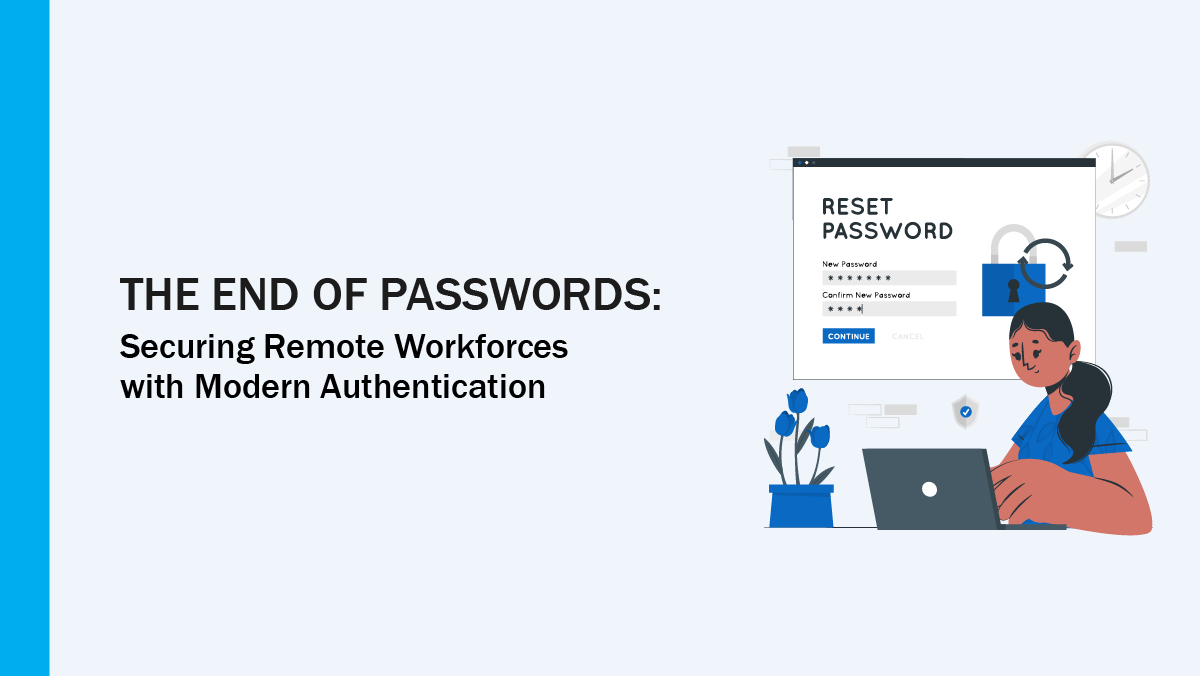Passwords have long been the standard for digital authentication, but they are becoming increasingly obsolete in today’s interconnected, remote-first world. Originally designed for an era of single-office workstations and limited digital access, passwords are now a major security liability. The flaws in password-based authentication are systemic and continue to expose organizations to severe risks. This is where Passwordless Authentication comes in.
Why Passwords Are Failing Modern Businesses
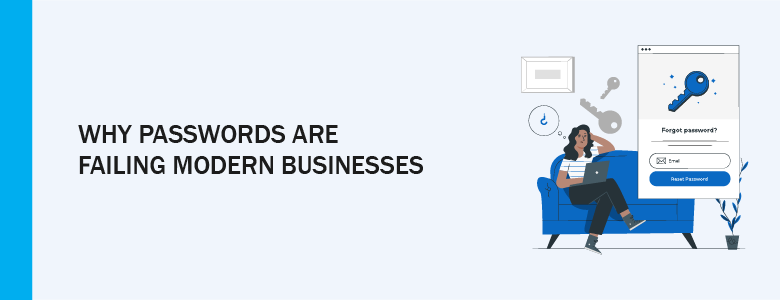
Phishing Vulnerability
Modern cyber threats exploit human psychology rather than technological weaknesses. Attackers no longer rely on brute-force methods to crack passwords. Instead, they use phishing techniques to manipulate users into divulging their credentials. A 2023 Proofpoint study found that 83% of organizations experienced phishing attacks, with remote workers being the most targeted demographic.
Password Fatigue and Reuse Risks
The average employee manages between 90 to 100 passwords, often juggling multiple accounts across both personal and work environments. To cope with the burden, 65% of users admit to reusing passwords across different services. This practice makes a single breach catastrophic, as compromised credentials from one service (such as a social media account) can be leveraged to infiltrate corporate systems.
Compliance Gaps and Security Limitations
Stringent regulations such as GDPR, CCPA, and HIPAA require organizations to implement strict access controls and maintain an immutable audit trail of authentication events. However, password-based security offers no reliable audit mechanism to track and verify access attempts. Furthermore, passwords are susceptible to database leaks, keyloggers, and brute-force attacks, making them a weak link in compliance-driven industries like finance, healthcare, and government.
The Cost of Password-Related Breaches
A European e-commerce firm experienced a catastrophic security breach when a remote employee’s reused password (previously leaked in a LinkedIn data breach) allowed hackers to gain access to the company’s payment system. The consequences were severe:
- €2.3 million in fraudulent transactions conducted before the attack was detected.
- €450,000 in GDPR fines due to inadequate access controls.
- 17% customer churn as a result of eroded consumer trust.
This real-world example underscores a critical truth: passwords are no longer sustainable for securing remote and distributed workforces.
How Passwordless Authentication Solves These Challenges
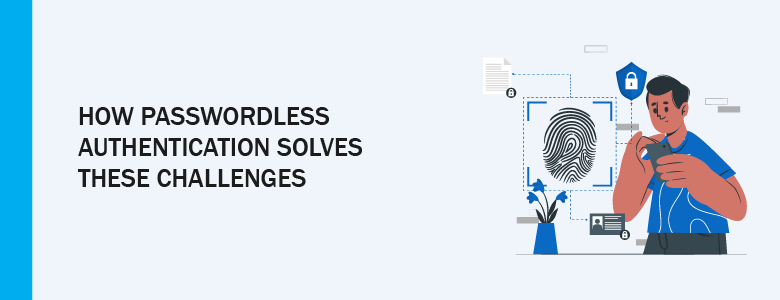
Passwordless authentication eliminates passwords altogether, replacing them with more secure and user-friendly methods. Companies are adopting different approaches to make authentication more secure and efficient.
Finance: Securing Banking Transactions
A major financial institution in the Philippines faced a critical security challenge—its remote traders needed instant and secure access to global trading platforms. However, relying on passwords made them vulnerable to phishing and unauthorized access.
Solution: The bank deployed FIDO2 security keys with biometric verification, ensuring only authorized traders could access trading systems, regardless of their location.
Results:
- Zero phishing-related breaches in 12 months.
- 40% faster logins, reducing delays during volatile market conditions.
- Significant cost savings from reduced fraud incidents and IT support requests.
Healthcare: Protecting Patient Records
A private hospital in Manila struggled with weak password practices among staff. Nurses and doctors reused simple passwords like “Hospital123” to access electronic health records (EHRs), putting patient data at risk.
Solution: The hospital introduced biometric smart cards that combined RFID and fingerprint authentication. Medical staff could now securely access EHRs without typing passwords.
Results:
- 100% compliance with data security regulations.
- 15-second login times, improving response times during emergencies.
- Eliminated credential sharing, ensuring only authorized personnel accessed patient data.
Retail: Preventing Online Fraud
A leading Philippine e-commerce platform faced a rise in credential-stuffing attacks, where hackers used stolen passwords from other sites to access customer accounts.
Solution: The company implemented passwordless authentication using magic links—one-time secure links sent to users’ registered emails or mobile apps.
Results:
- 80% reduction in account takeovers.
- 30% higher customer satisfaction scores due to smoother logins.
- Lower fraud-related chargebacks, improving overall revenue security.
By eliminating passwords and adopting more secure authentication methods, businesses across industries in the Philippines are reducing risks and improving efficiency.
Why Now is the Time to Ditch Passwords
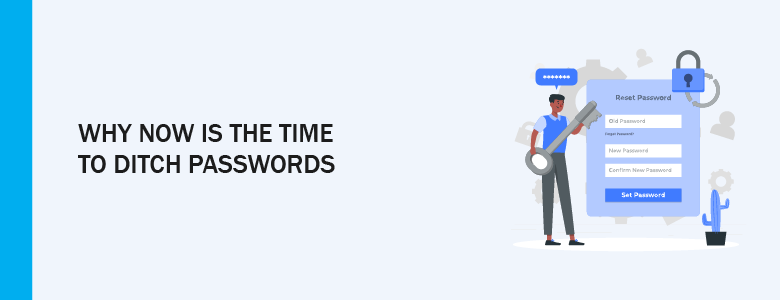
Cutting Costs and Reducing Risk
The financial burden of password-related security issues is significant. The average data breach costs businesses $4.45 million (IBM), with a large portion of that stemming from credential theft and unauthorized access. Beyond direct breach costs, companies also spend millions annually on IT support for password resets, lost access, and compliance failures.
Gartner research shows that switching to passwordless authentication can cut IT support time spent on password resets by 50%, freeing up resources for more strategic initiatives. Additionally, companies that have eliminated passwords report a drastic reduction in credential-related breaches, leading to lower insurance premiums and fewer regulatory fines.
Staying Ahead of Security Regulations
Cybersecurity regulations are evolving rapidly, and many are now advocating for passwordless authentication to improve security and compliance.
- NIST SP 800-63B recommends phishing-resistant MFA like FIDO2 security keys, emphasizing the importance of moving beyond traditional passwords.
- The EU Digital Identity Wallet mandates passwordless authentication by 2025, requiring organizations operating within the EU to adopt secure alternatives.
- Financial and healthcare industries are under increasing pressure to implement strong authentication measures, as regulatory bodies prioritize data protection and secure access controls.
By transitioning to passwordless authentication now, businesses can future-proof their security strategies and avoid last-minute compliance scrambles.
The Future of Business Security is Passwordless
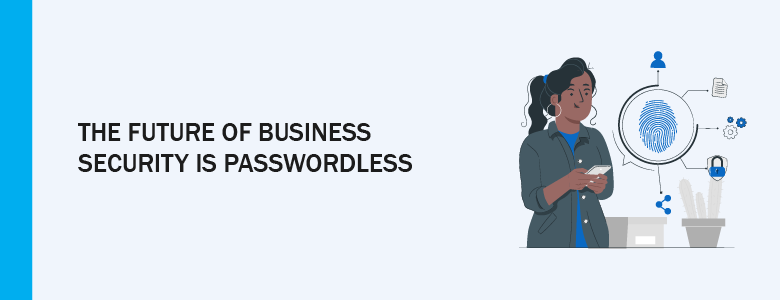
Moving to passwordless authentication isn’t just about security—it’s about improving efficiency, meeting compliance requirements, and staying competitive in a digital-first world. The technology is here, and businesses that adopt it now will be ahead of the curve.
Where to Start:
- Audit your current password-based systems (email, CRM, cloud apps).
- Test FIDO2 security keys or passkeys with high-risk teams (IT, finance, executives).
- Work with cybersecurity experts to roll out passwordless solutions smoothly.
Eliminating passwords isn’t just a security upgrade—it’s a smarter way to do business.
Interested in learning more about Passwordless or other security solutions to look out for? Contact us at marketing@ctlink.com.ph to book a meeting with us today!

